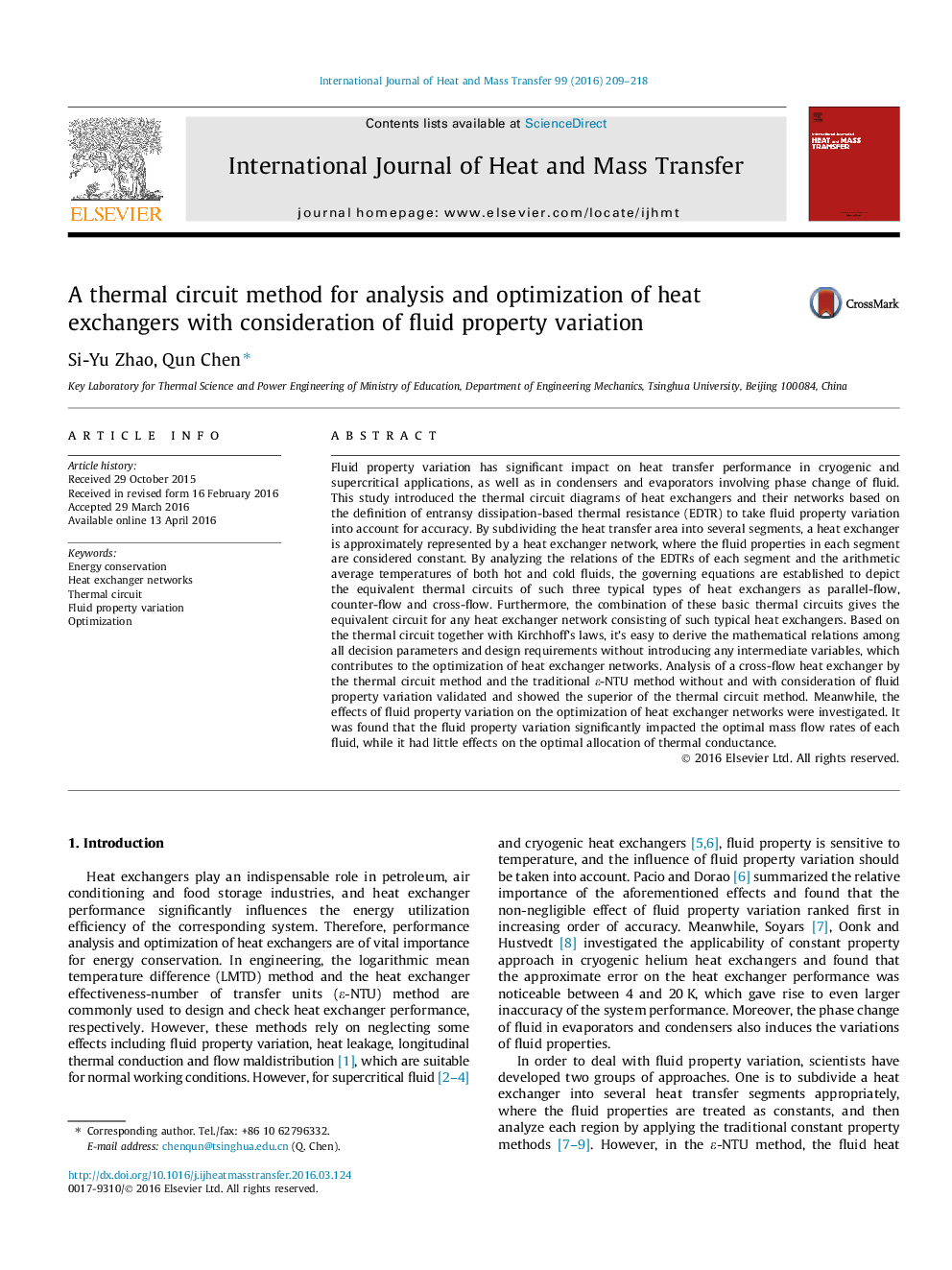| کد مقاله | کد نشریه | سال انتشار | مقاله انگلیسی | نسخه تمام متن |
|---|---|---|---|---|
| 656446 | 1458043 | 2016 | 10 صفحه PDF | دانلود رایگان |
• Heat exchanger networks with variable property fluids are analyzed and optimized.
• A thermal circuit method is developed to consider fluid property variation.
• The relations of all decision variables and design requirements are derived.
• Optimization equations for heat exchanger networks are deduced theoretically.
• The effects of property variation on the optimal decision variables are discovered.
Fluid property variation has significant impact on heat transfer performance in cryogenic and supercritical applications, as well as in condensers and evaporators involving phase change of fluid. This study introduced the thermal circuit diagrams of heat exchangers and their networks based on the definition of entransy dissipation-based thermal resistance (EDTR) to take fluid property variation into account for accuracy. By subdividing the heat transfer area into several segments, a heat exchanger is approximately represented by a heat exchanger network, where the fluid properties in each segment are considered constant. By analyzing the relations of the EDTRs of each segment and the arithmetic average temperatures of both hot and cold fluids, the governing equations are established to depict the equivalent thermal circuits of such three typical types of heat exchangers as parallel-flow, counter-flow and cross-flow. Furthermore, the combination of these basic thermal circuits gives the equivalent circuit for any heat exchanger network consisting of such typical heat exchangers. Based on the thermal circuit together with Kirchhoff’s laws, it’s easy to derive the mathematical relations among all decision parameters and design requirements without introducing any intermediate variables, which contributes to the optimization of heat exchanger networks. Analysis of a cross-flow heat exchanger by the thermal circuit method and the traditional ε-NTU method without and with consideration of fluid property variation validated and showed the superior of the thermal circuit method. Meanwhile, the effects of fluid property variation on the optimization of heat exchanger networks were investigated. It was found that the fluid property variation significantly impacted the optimal mass flow rates of each fluid, while it had little effects on the optimal allocation of thermal conductance.
Journal: International Journal of Heat and Mass Transfer - Volume 99, August 2016, Pages 209–218
